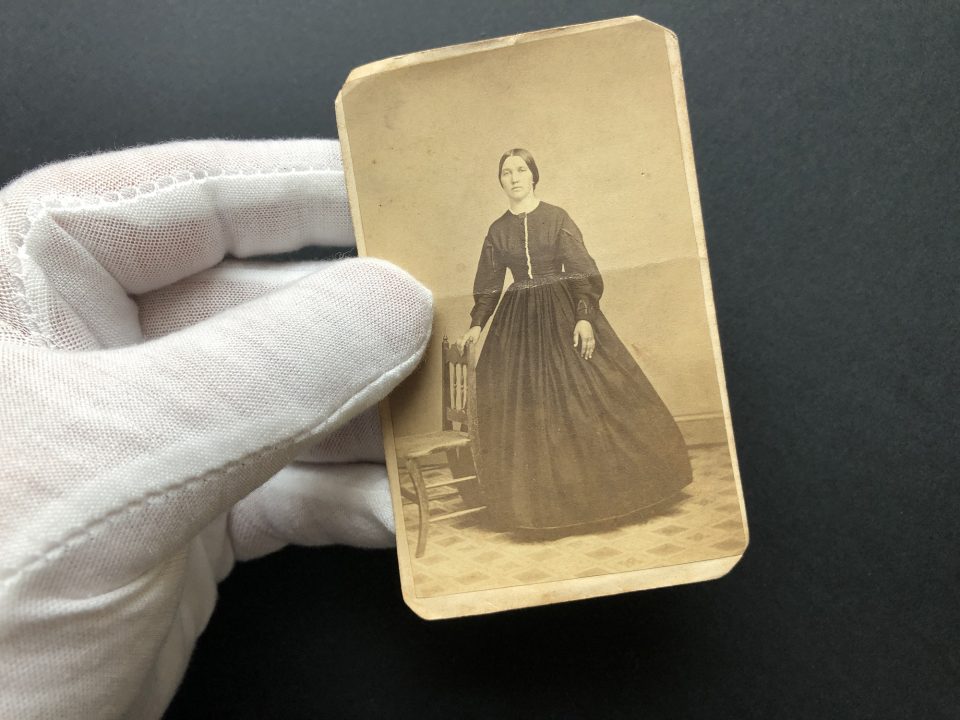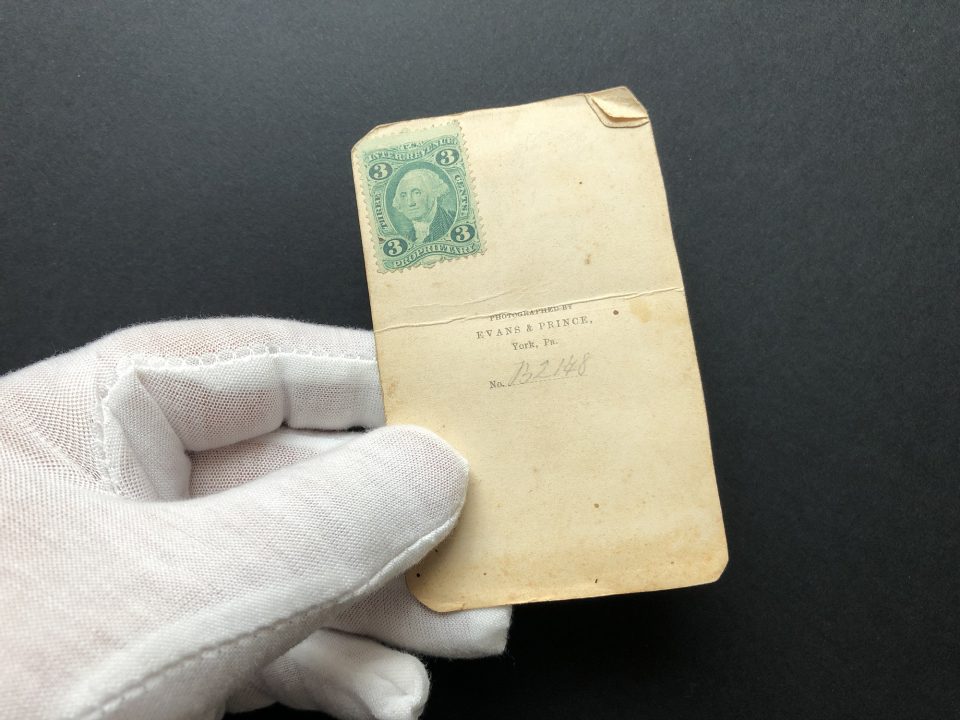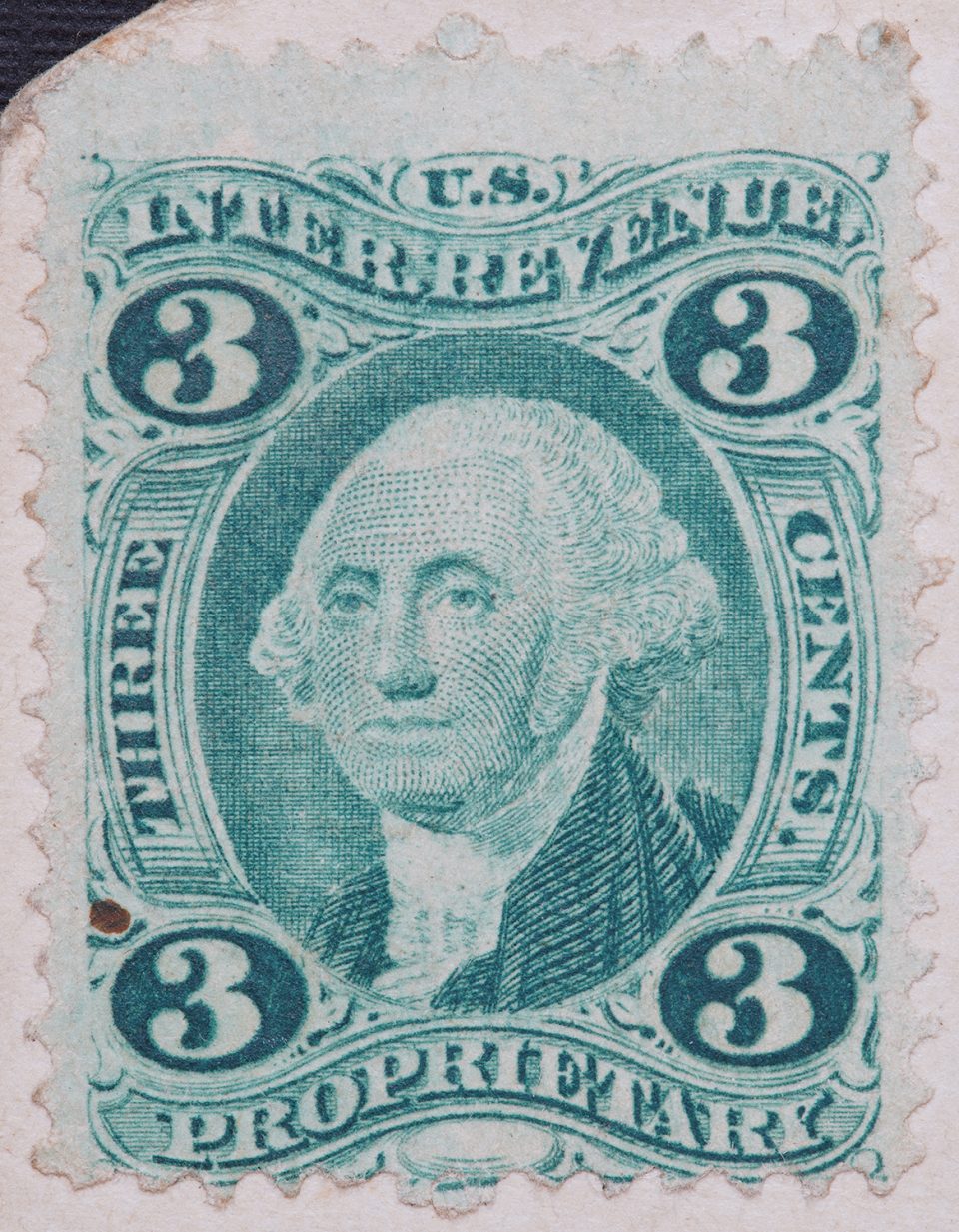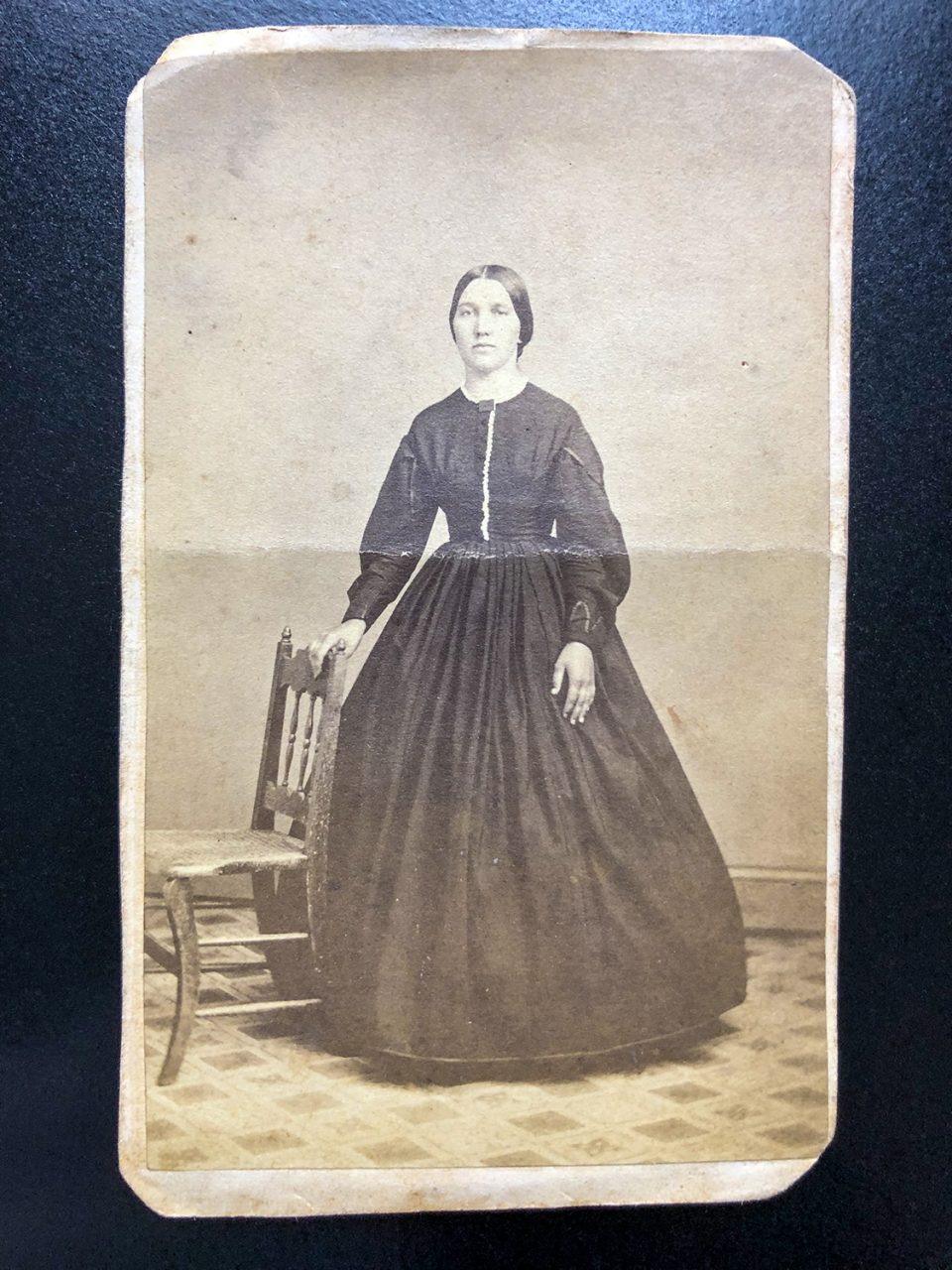Why is there a green, 3-cent tax stamp on this Evans & Prince portrait made in the 1860s?
A brief history of the Evans & Prince Portrait Studio of York, Pennsylvania, and about tax stamps
Carte de visite photographs were made by the millions in the 1800s, with the idea that you could easily and affordably give them to family and friends when visiting.


This is an albumen print, mounted onto a backing card. I bought this for $2.50 at an antique shop and the seller had written on the card that it’s from the 1880s. That date is incorrect.
Tax Stamps on Antique Photographs
I was able to accurately date this photograph to a two-year window of time, because of the stamp on the back. The stamp was the main reason I decided to buy the old photograph, and I assumed it was a postage stamp, but it’s actually a three cent tax stamp.

The stamp features an engraving of George Washington, based on his famous portrait by artist Gilbert Stuart.
Tax stamps were used for a wide variety of products like liquor, cotton, tobacco, and patent medicine — you know that fake stuff in bottles sold by snake oil salesman back in the old west. But tax stamps were also made for a lot of very specific kinds of things like playing cards.
The revenues were used to help the U.S. government pay for the high costs of fighting the American Civil War, which lasted from 1861 to 1865.
The photography business boomed during the Civil War because families wanted photos of men going off to war, and heroes coming home from the war. Of course, the U.S. government noticed all the money being made, and placed a tax on photography in 1864.
There was never a photography stamp, so photographs often feature stamps that say “Playing Cards,” or “For Exchange,”but in this case, it says “Proprietary.”
Because all photographs, including albumen prints, were printed using the sun, photographers said they were being taxed for using sunlight.
Photographers began complaining about the tax immediately, saying it was unfair because they were already paying higher costs on their materials because of the war — and after two years they successfully convinced the government to remove the tax.
That means I can accurately date this photograph at sometime between September 1, 1864 and August 1, 1866.
(By the way, the war debt wasn’t paid off until 1883 according to Wikipedia.)
Stamps were usually cancelled by the photographer with a rubber stamp or marked by hand with a pen and ink. This one is pretty rare in that it was never cancelled.
One source said that ordinary photographs like the one featured here would have been taxed at two cents, with more elaborate prints like hand-colored portraits taxed at three cents. This photograph is not hand colored, but was still taxed at three cents.
You’ll notice the back of the photograph also holds the photographer’s stamp.
Evans & Prince Photography Studio of York, Pennsylvania
This image was made by the studio of Evans & Prince in York, Pennsylvania. The studio was founded by Scottish-born immigrant Fitz James Evans, Sr. in 1858, and later joined by Mr. Prince. The studio made a huge number of portraits of soldiers in uniform, many of which can be found online.
The number hand-written in pencil on the back of the photograph was the Evans & Prince catalog number of this negative. Unfortunately, the Evans & Prince catalog has been lost, and therefore I have no way of identifying for the subject of this portrait. If you think you know who she might be, please leave a comment.
Do You Know Her Identity?
This woman would have lived in the vicinity of York, Pennsylvania in the mid-to-late 1800s. Do you know who she might have been? I’d love to learn more about her.

Thanks for reading.
Be sure to visit me on Facebook, Instagram or Pinterest, or on my website at keithdotson.com
~ Keith
Sources
Antique Trader, “The Civil War Sun Picture Tax,” Dr. Anthony Cavo, May 4, 2021
Wikipedia, “Revenue stamps of the United States”
York Daily Record, “York residents flocked to local photographers during the Civil War,” Scott Mingus, January 21, 2015
